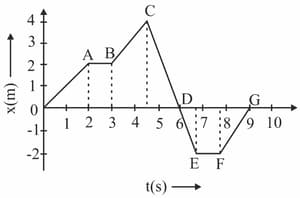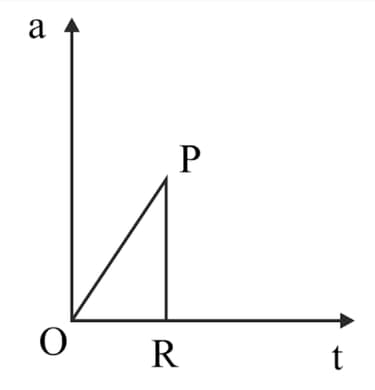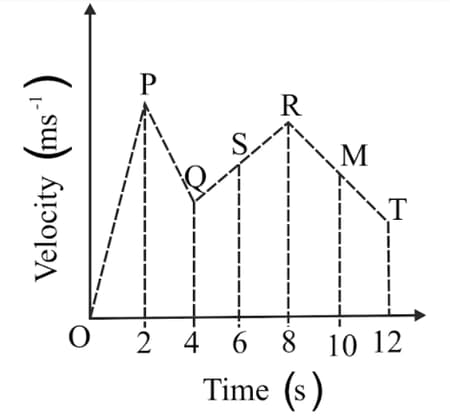A dancer is demonstrating dance steps along a straight line. The position - time graph is given here.

The average velocity of the dancer during time interval between to is


Important Questions on Motion
Figure shows the plot of a particle in one-dimensional motion. Two different equal intervals of time are shown. Let and be average speeds in time intervals and respectively. Then,

Consider the given statements and select the option which correctly identifies the true (T) and false (F) statements.
(i) Distance is the magnitude of displacement in all cases.
(ii) When a body moves with uniform speed, then the average speed is same as instantaneous speed.
(iii) Average speed is greater than the average velocity if a body is moving in a straight line without reversing its direction.
(iv) When a body moves with constant velocity, the average velocity is zero.
Match the column I with column II and mark the correct option from the codes given below.
| Column | | Column |I | ||
| (a) | (i) | ||
| (b) | (ii) | ||
| (c) | (iii) | ||
| (d) | (iv) |
What would you conclude about the velocity-time graph of the cyclist from the given graph?

Statement : An object thrown vertically up with a velocity reaches the maximum height after seconds. At a time seconds, its velocity becomes zero.
Statement : An object, thrown vertically up with a velocity comes back to its initial position with the same magnitude of velocity but in the opposite direction.
The velocity-time graph of an object is shown in the figure. Identify the correct statement(s) regarding this graph.

i) This is a non-uniform velocity-time graph of the object.
ii) The velocity of the object is increasing at the same rate during OP and QR.
iii) The velocity of the object is decreasing at the same rate during PQ and RT.
